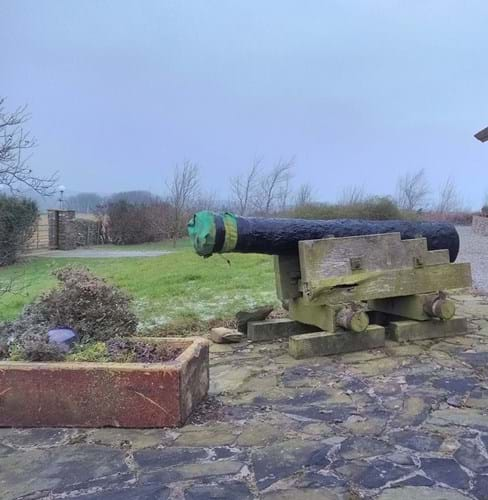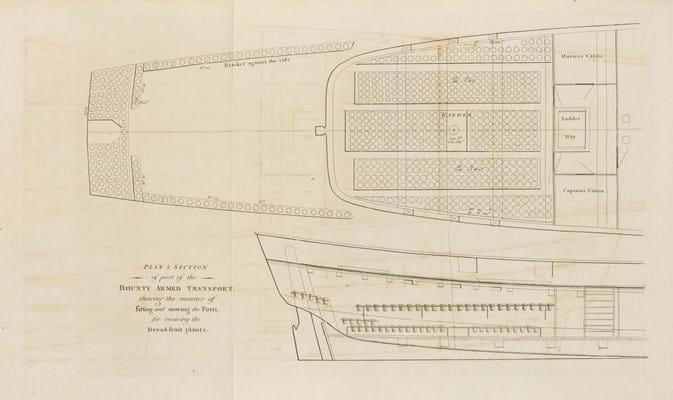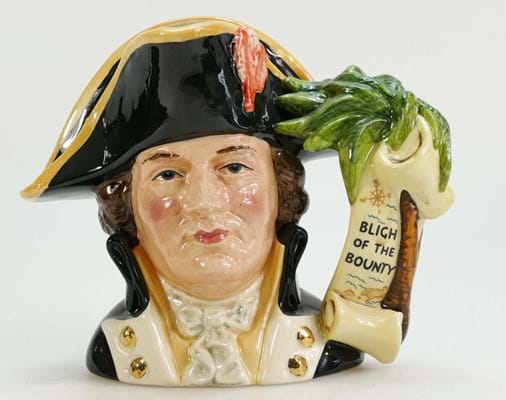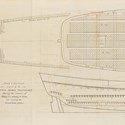
Documentation being offered with that cannon in the Thomson Roddick June 9 sale says it came originally from HMS Bounty – the Royal Navy ship immortalised by the ‘mutiny on the Bounty’.
The Bounty itself was burned off Pitcairn Island but according to the provenance, this cannon was gifted to Captain Stewart of the Orealla in 1898. The letter is signed by JR McCoy, president of Pitcairn Island and great-grandson of one of the original mutineers.
The cannon was found in south-west Scotland by Thomson Roddick auctioneer Sybelle Thomson.
Breadfruit mission
HMS Bounty, also known as HM Armed Vessel Bounty, was purchased in 1787 by the RN for a botanical mission to the Pacific Ocean under the command of William Bligh to collect breadfruit for transplantation to the West Indies to feed the burgeoning slave population.
Captain William Bligh turned out to be something of a martinet, caring more about the cargo than his crew (who were eager to go back to the paradise of Tahiti). Finally, in 1789, Acting Lieutenant Fletcher Christian led a mutiny of the crew and put Captain Bligh and his 18 supporters adrift in an open boat.
They completed an amazing feat of seafaring endurance and survival, using only a sextant and a pocket watch to complete a 3600-mile trip to reach safety in Timor in only 41 days. The RN despatched a ship to apprehend the mutineers but most escaped captivity.
Escape to Pitcairn
Christian and his men, with native Tahitian wives, landed on Pitcairn Island and destroyed the ship. Life there proved far from idyllic, however. Eighteen years later, when discovered by the ship Topaz, only one of the original mutineers was still alive.
The remains of the Bounty were discovered in 1957 by photographer and explorer Luis Marden, still visible in shallow water.
Bligh himself is buried in Lambeth, London. His tomb is part of the former St Mary’s Church site now occupied by The Garden Museum.
He was tried but acquitted for the loss of the Bounty. It is little-known that on a better prepared second voyage from 1791-93 he did succeed in getting breadfruit to the West Indies, although another mutiny was narrowly averted.
Bligh returned to active service in 1795 and served with distinction under Admiral Duncan at the Battle of Camperdown in 1797 and with Nelson at the Battle of Copenhagen in 1801.
Later, as Governor and Captain-General of New South Wales, Australia, he was put under house arrest by the military for a time during the ‘Rum Rebellion’ when tasked with stamping out corruption.
Mutiny reminders
Bounty-related items do come up for auction fairly often at different price points. In December last year Forum Auctions in London sold a copy of Bligh’s own account of the mutiny and his subsequent journey across the Pacific in the ship's launch.
This first edition of A Voyage to the South Sea...Including an Account of the Mutiny on Board the said Ship, and the subsequent Voyage of part of the crew in the Ship's boat from Tofoa...to Timor sold for a hammer price of £3200, double the top estimate.
It included seven engraved plans, plates and charts.
Bounty memorabilia doesn’t have to set you back thousands, however. In November last year Potteries Auctions of Stoke-on-Trent sold a Royal Doulton large character jug Captain Bligh D6967 with certificate, for a mid-estimate £40.









